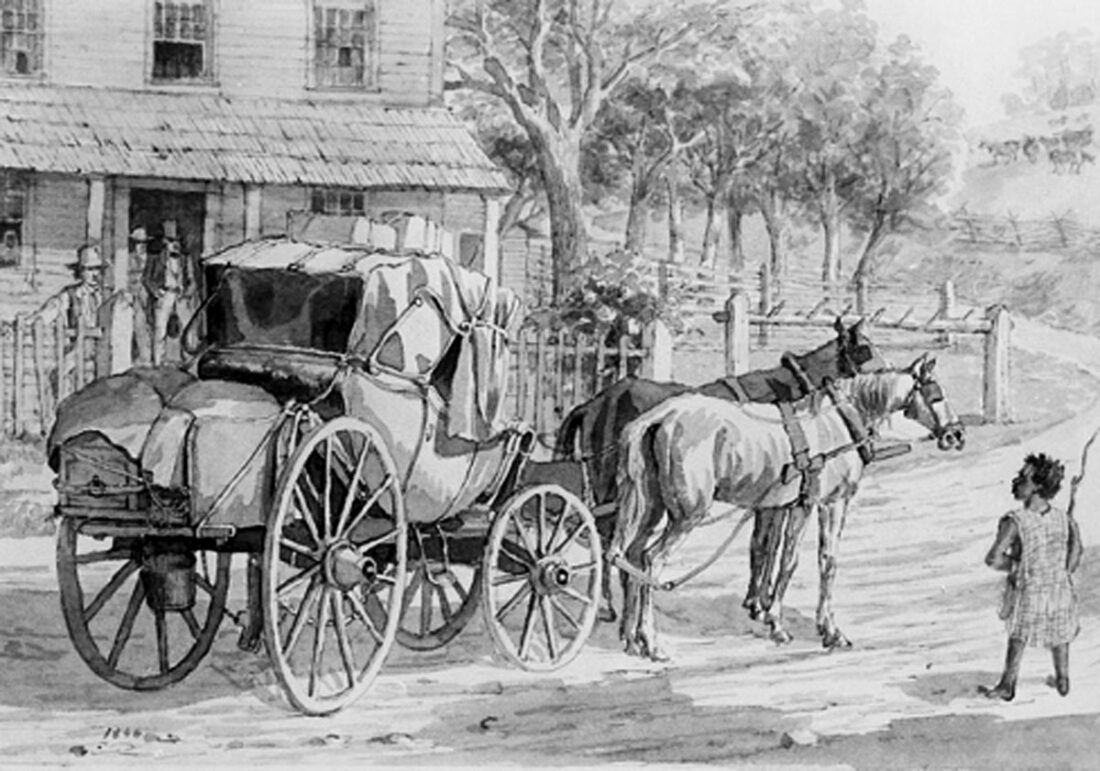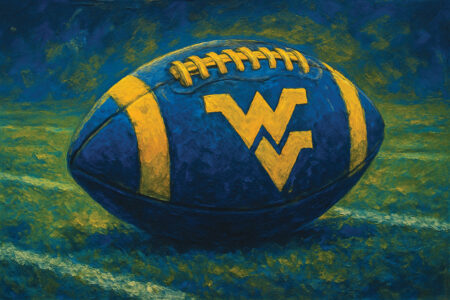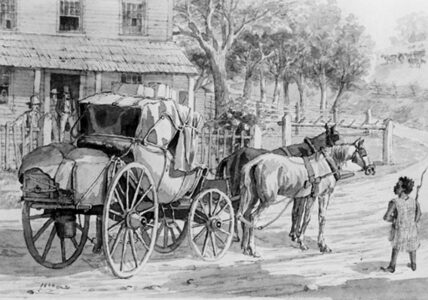Look Back: Before the rails

This drawing by Joseph H. Diss Debarr depicts a stagecoach on a stop along the Northwest Turnpike, now US 50. (Photo from WV Dept. Archives and History)
Stagecoach Preceded Rail Between City and Baltimore
Although Parkersburg has lost [did not keep] the first stagecoach that ran between Parkersburg and Baltimore, the story of early stagecoach travel has been handed down by old-timers in accounts that have been printed in early newspapers.
Among such was one report appearing in an old issue of The News covering a report made by James Boyd Scullen in his “Recollections of Early Parkersburg.” Extracts from it follow:
Parkersburg, like many other towns located on a navigable stream which offered facilities for travel, was a decidedly important place in those days.
The steamboat was the most important means of travel along the inland waterways, with the stagecoach and the covered wagon the only means of transportation overland until the railroad was built.
The covered wagon in which many early householders in the area arrived, was a large sway-back conveyance with a white canvas covering which could be closed at night, affording protection for the entire family and their limited household goods. These wagons would sometimes arrive loaded with deer and bear meat, wild turkeys and chestnuts, collected enroute.
The stagecoach was the only means of early passenger travel over the Staunton and Northwest Turnpikes.
The two [turnpikes] began at The Point where the Little Kanawha River flows into the Ohio. The Staunton Turnpike left what today is 7th St. at the Stephenson Home [known as Oakland today] and followed the Little Kanawha River for several miles, with a number of mileposts set up. [Originally the Staunton Turnpike (Route 47), crossed Worthington Creek very near the mouth of the creek at the site of the current railroad bridge.]
The first milepost was between what now are Swann and Lynn Sts., in front of what was later the W.H. Teft residence. The second was at the mouth of Worthington Creek on the Staunton Turnpike. The second post on the Northwest Turnpike was near what now is Park Ave. and 7th Sts.
There were numerous taverns along the two turnpikes where the stagecoaches stopped to permit passengers to eat.
The story was told that one such passenger stopping at a tavern, brought along his satchel with it being placed in a chair in the dining room. When paying his bill, he thought it rather high and inquired why. Whereupon he was told his satchel also occupied a chair, therefore the charge!
He immediately returned to the dining room, opened his satchel and began stuffing food into it. When he was remonstrated with, he said that the meal was paid for and his satchel would eat.
Parkersburg early hotels included the Otis Tavern, a two-story brick fronting the levee near the Point, and managed by a man named Otis, who gave his name to what was known as the Otis Tavern.
From an undated Parkersburg newspaper.
***
Bob Enoch is president of the Wood County Historical and Preservation Society. If you have comments or questions about Look Back items, please contact him at: roberteenoch@gmail.com, or by mail at WCHPS, PO Box 565, Parkersburg, WV 26102.






